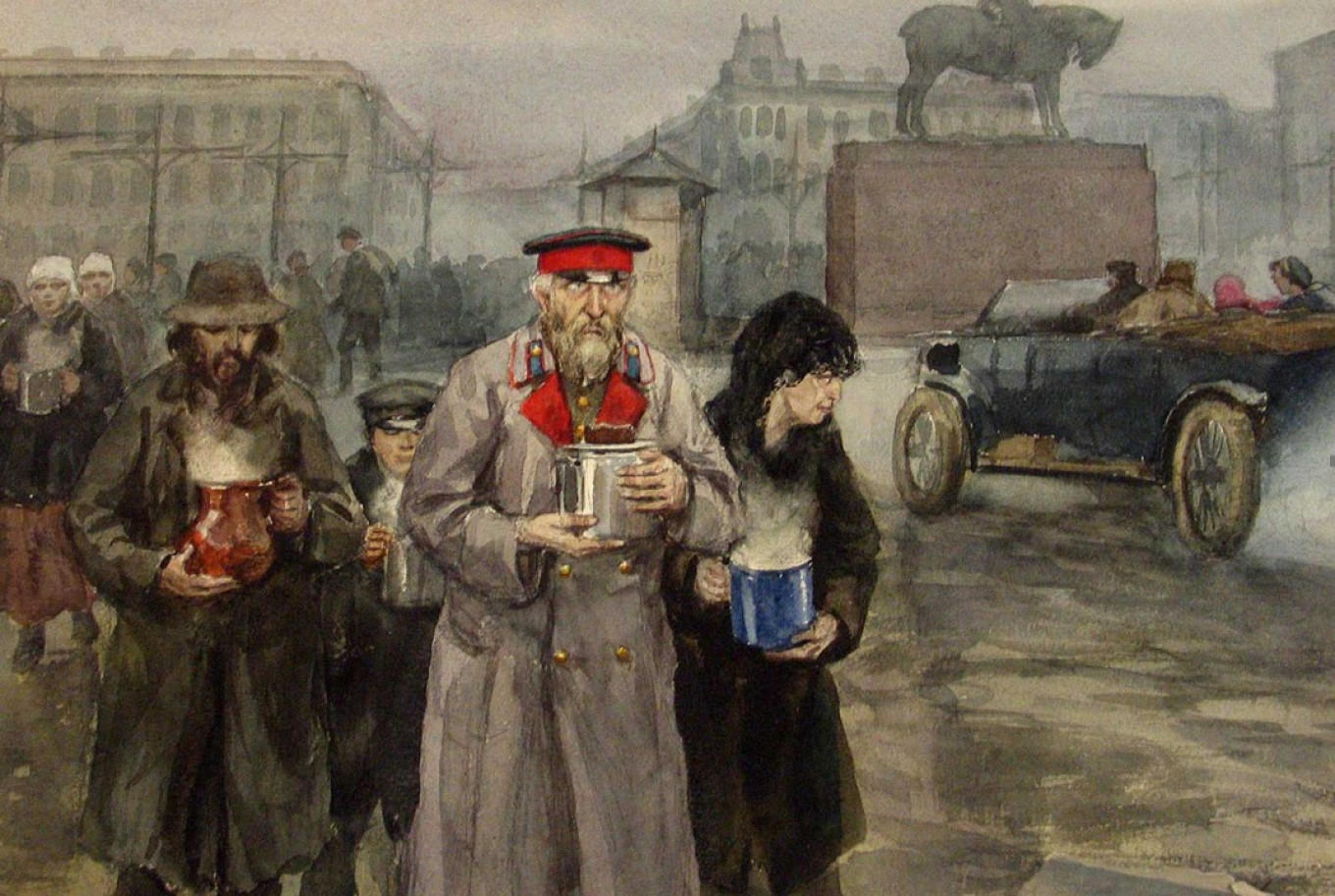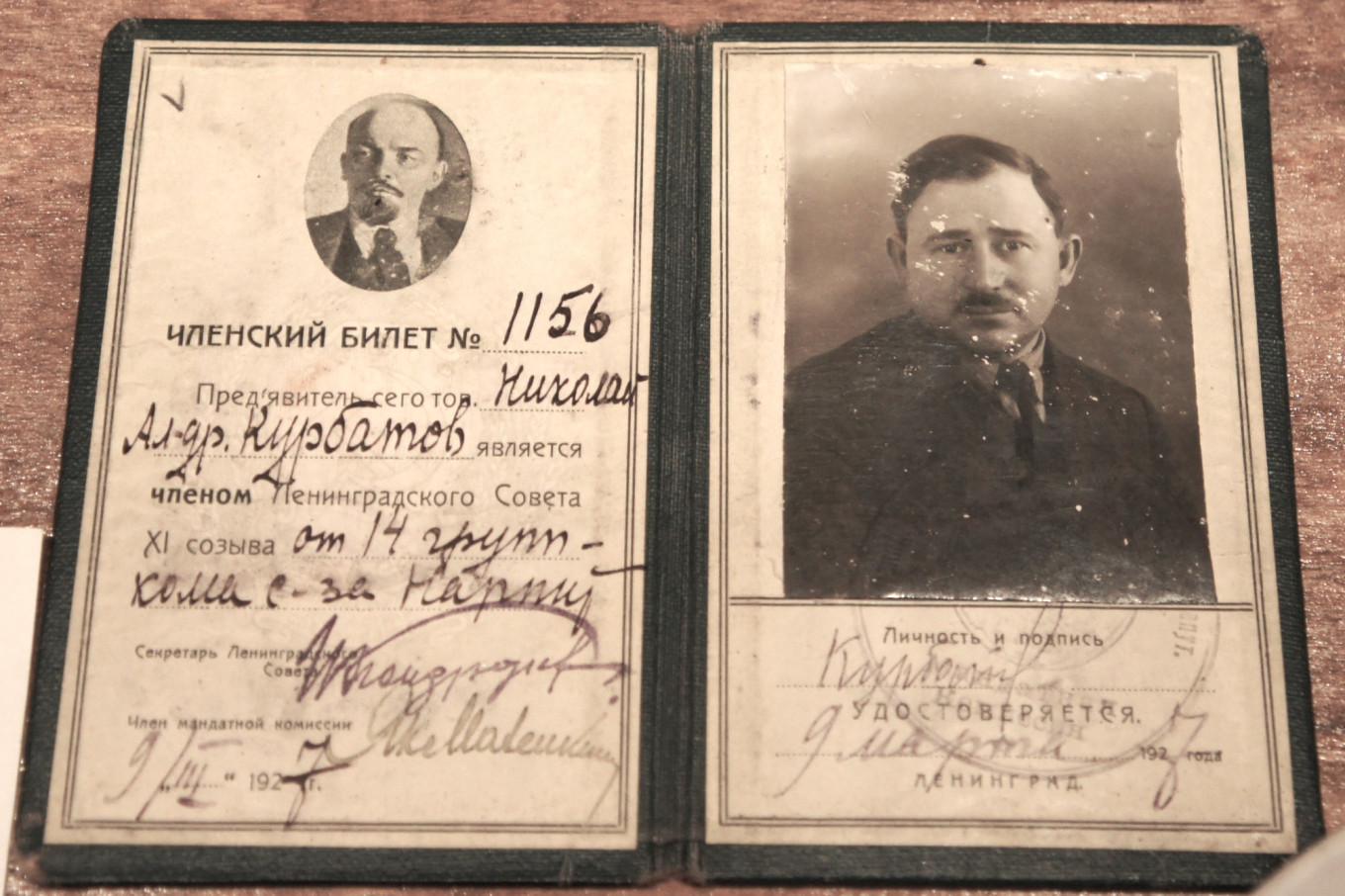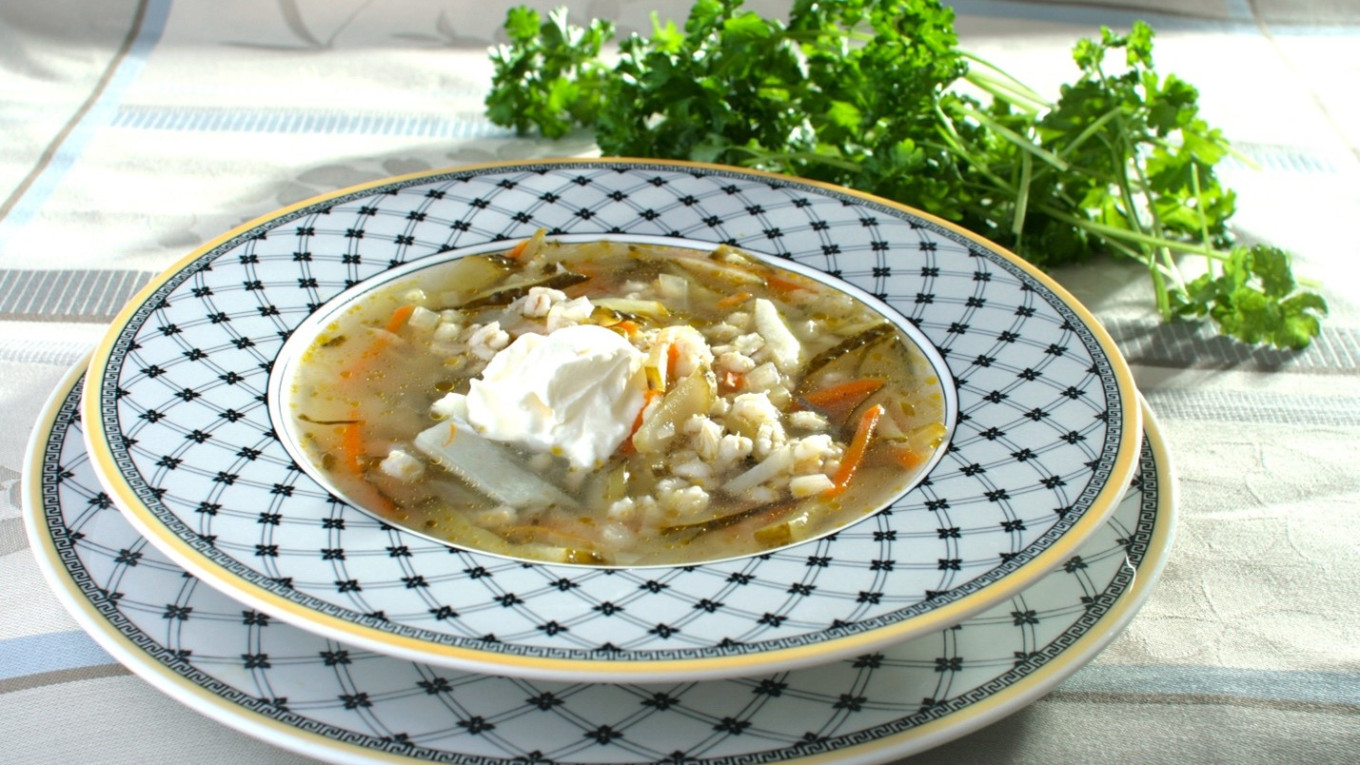Today in Russian restaurant menus you might come across “Leningrad style” preceding the word rassolnik. But this St. Petersburg soup is just the Soviet version of a Moscow dish. It was created after the 1917 Revolution and reflected food shortages. It was made with pickled cucumbers, potatoes and pearl barley. What’s to be proud of?
Moscow style rassolnik is another matter. It is a dish often found on restaurant menus. Originally made with chicken broth, tripe and kidneys, it wasn’t very caloric. But like all rassolniks, it included pickled cucumbers. The Moscow version also had a lot of white root vegetables — celery and parsley root, leeks, turnips — up to 40% of the solids in the soup. To increase calories, they added a liaison, a mixture of egg and milk.
These rassolniks had an ancestor in the Russian Middle Ages: kalya. You can find the term in the first Russian household manual, "Domostroi" (1550s). It contains many versions: salmon kalya with lemons, whitefish kalya with plums, sterlet kalya with cucumbers, duck kalya with plums" and even grouse kalya with cucumbers.
So, what is this dish? It’s the general term for a broth-based soup based (beef, chicken, fish) with the addition of pickled cucumbers and brine, as well as caviar. The fish version was the most popular Lenten dish.
Vladimir Dahl explains in detail the nature of this neglected soup. "Kalya is a kind of borscht, a soup made with pickle brine, cucumbers, beets and meat, and with fish and caviar in Lent; it is a soup of caviar with salted cucumbers." After reading many old cookery books, we would add that the dish is also made, deliciously, with chicken and mushrooms.
Kalya is a perfect example of the idea that we have always defended: today it is unnecessary and indeed impossible to reproduce an ancient recipe exactly as it was written. Time changes, attitudes to food change, and the approach to certain products becomes different. Here, for instance, is a recipe from the Dictionary of Cookery (1796): "Take some pressed caviar, slice it. Peel salted cucumbers and also slice. Add onions, pour in cucumber pickle brine, dilute with water and cook in a pot. When serving, season with pepper."

Today the phrase about making a soup with chunks of pressed caviar sounds like fantasy or mockery. But despite centuries gone by, kalya is still delicious today. Adapted to today's tastes, the recipe fits nicely into our modern diet. It doesn’t take long to make, but it lets the cook show off both culinary skills and historical knowledge.
And kalya was not only made from meat and fish. Here is a recipe for mushroom kalya from a book printed in 1879.
"Kalya soup of mushrooms. Clean and boil as many porcini mushrooms as needed, cut into slices, finely dice cucumbers and onions, and fry it all in poppy-seed oil, sprinkling flour on the pan. Then pour in mushroom broth, salt, add pepper and boil. Make the kalya tart with a bit of lemon juice or pickle brine. Brighten with a garnish of almond milk and serve.”
Today this recipe would add great variety to the table, especially during Lent.
Later in our history, soups made with pickles and brine changed again. The Soviet-era rassolnik that we all new was the same soup in principle, just with the addition of a generous portion of grain, either barley or rice. That was totally understandable, given the shortages at the time.
But in the Soviet years, we got used to the phrase “Leningrad rassolnik” or “Leningrad-style rassolnik.” Like many other aspects of Soviet life, this phrase became part of our lexicon. But what was so “Leningrad” about it? The pickled cucumbers? The pearl barley? The Cradle of the Russian Revolution wasn’t particularly well-known for either of those foodstuffs.

We heard the solution to this mystery from Margarita Kutkina (a professor at St. Petersburg University of Trade and Economics). She told us this: “Immediately after the Revolution a famous cook, Nikolai Kurbatov, worked in the city. He came to St. Petersburg in 1905 as a ten-year-old boy to train in a tavern. And after the October Revolution, when public eateries had to feed people, he worked as a technologist at NARPIT (association of public cafeterias). At night he and his colleagues worked on their own cookbook. He told us a lot about how they invented their own rassolnik that later became "Leningrad rassolnik" in 1918-1919.”

This was a common practice: developers took old recipes, simplified them and produced dishes that were then sold in all the catering establishments of the Soviet Union. If the old rassolnik was an elegant soup of "pickled cucumbers and root vegetables,” its Leningrad version made it more filling with pearl barley.
But it also completed a simple historical circle, returning to the forgotten roots of old Russian kalya, but in new everyday circumstances.
Kalya mushroom soup
Ingredients
- 300 g (1 ¼ c) fresh or frozen wild mushrooms, or 100 g (3/4 c) dried mushrooms
- 5 medium-sized salted cucumber pickles (storebought kosher pickles or using recipe here)
- 2 small onions
- 1 Tbsp vegetable oil
- Salt, freshly ground pepper
- Almond milk (garnish)
Instructions
- Wash the mushrooms, cut into small pieces, put them in a saucepan with cold water (1.5 liters/quarts), bring to a boil, skim off the foam, turn down the heat and cook for 20 minutes. Rinse the mushrooms in a colander but do not discard the broth: return it to the pot!
- While the mushroom broth is cooking, chop the onion and cut pickles into julienne strips.
- Heat vegetable oil in a frying pan and fry the onions until golden, then add the mushrooms and cook together for 10 minutes. Taste and season with pepper. To thicken the soup, you can add a tablespoon of flour to the pan with the fried onions and mushrooms. The kalya will be heartier, but less transparent.
- Add the onions, mushrooms and cucumbers to the pot of mushroom broth, bring to a boil and cook on a very low heat for 10 minutes. Garnish with almond milk.

Leningrad Rassolnik
Two hours before you begin to make the soup, start soaking the pearl barley in cold water. It’s even better if you soak it overnight. Be sure to rinse it thoroughly first. Start preparing a broth with the brisket and vegetables to your taste. While that cooks at a gentle boil, prepare the rest of the soup. For about 2.5 liters (quarts) of bouillon:
Ingredients
- 1 kilo (about 2 ¼ lb) brisket
- Vegetables for broth
- 1 onion
- 1 carrot
- 3 salted cucumber pickles (storebought kosher pickles or by recipe here)
- 2 potatoes, cut in slices
- 1/3 cup pearl barley
- 1 Tbsp clarified butter
- Bay leaf, salt and pepper
Instructions
NOTE: It’s better to cook the barley separately. If you want you can add the barley to the broth about 90 minutes after it has started to boil. But if you do, the soup will be thick and slightly viscous. If you like it that way, that’s fine. Cook the barley separately if you prefer a transparent broth.
- If you have soaked the barley ahead of time, add the grain to hot water in a saucepan – 1 part barley to 1.5 parts water — bring to a boil and cook on low heat until the water has been incorporated and the barley is done, about 15 minutes. Don’t worry if it is not completely tender; it will cook more in the broth with the other ingredients.
- If you haven’t pre-soaked the barley, you need one part barley to two parts water, and it will be take at least 40 minutes on low heat to cook through.
- While the broth and barley are cooking, dice the onion, julienne the carrots and pickles (they can also be grated on the large holes of a box grater).
- In a saucepan heat melted butter (you can substitute vegetable oil), lightly sauté the onion and carrots, add cucumbers and cook over low heat for 25 minutes. You can pour in half a spoonful of broth to keep it moist if necessary.
- When you salt the broth, keep in mind that cucumbers are also salty, so it is better to under-salt.
- When the broth is ready, take out the meat and cooked vegetables. Then add the sliced potatoes and boil for about 10 minutes; then add the barley (which is almost cooked through); and then all the rest from the saucepan. Simmer on low heat for 15 minutes, add bay leaf and check for seasoning. If you have pickle brine, add some for tartness.
- Remove the bay leaf and let sit for a few minutes before serving.
- Cut the meat into small pieces and add to the soup or place in bowls before serving. Garnish with sour cream and a generous sprinkle of parsley and dill.

A Message from The Moscow Times:
Dear readers,
We are facing unprecedented challenges. Russia's Prosecutor General's Office has designated The Moscow Times as an "undesirable" organization, criminalizing our work and putting our staff at risk of prosecution. This follows our earlier unjust labeling as a "foreign agent."
These actions are direct attempts to silence independent journalism in Russia. The authorities claim our work "discredits the decisions of the Russian leadership." We see things differently: we strive to provide accurate, unbiased reporting on Russia.
We, the journalists of The Moscow Times, refuse to be silenced. But to continue our work, we need your help.
Your support, no matter how small, makes a world of difference. If you can, please support us monthly starting from just $2. It's quick to set up, and every contribution makes a significant impact.
By supporting The Moscow Times, you're defending open, independent journalism in the face of repression. Thank you for standing with us.
Remind me later.







